…
Last week, I spoke with three 8th-grade science classes at the KIPP (Knowledge is Power Program) Academy in Lynn, Massachusetts. It’s my third visit in two years, and I’ve found my time there to be very well-spent. KIPP is a neat place. The teachers are passionate and believe in their students, who in turn are highly enthusiastic and engaged. On its website, the program mentions that its objective is to help students in under-served communities around the United States “climb the mountain to and through college.” This is accomplished through effective teachers, a lengthened school day and week, and by instilling “a strong culture of achievement.”
…
One very admirable aspect to their philosophy is that “demographics do not define destiny.” More than 87 percent of KIPP students nationally come from low-income families, but the school feels that this can be overcome through hard work, and they have the data to back this up. “There are no shortcuts,” is one of their school mottos. Good for them.
.

Some of the fossil casts I brought with me. Except the one on the left. That’s a boy (my son, actually).
..
…
I came prepared to talk about a very broad question: “what are humans?” I brought with me some things fundamental to biological anthropology, including some fossil casts of human ancestors, video clips of ape behavior, and slides related to genetics, fossils, and human biological variation. If I had the three classes for about an hour each, I wanted them to come away having considered some big ideas, including that all humans comprise a single evolved species, and that all life is related. That’s not easy to do in an hour, and I quickly gave up on structure, instead weaving these things within the flow of what became mostly a question-and-answer session.
…
The icebreaker was to show them my own 8th grade class photo (top), and to ask the students if they could locate me. It got some laughs, but it was more than an icebreaker, and far from a trivial matter to me. In fact, I know that my interests in human variation and biological anthropology are tied directly to my having attended a school for eight years where I was often the only “white boy” in the class. It made me very aware of race at a young age, and I hoped the photo could act as a entry point for the class to talk about human variation. As a kid, I wondered why people looked different and where we came from. It wasn’t until I was an undergraduate at the University of Rhode Island, where I found Marquisa LaVelle’s introductory class on biological anthropology, that I had any solid answers.
…
It was there that I learned that skin color was an adaptation to ultraviolet light, that we have evidence for human evolution through genetics and fossils, and that apes are our close cousins. I was hooked, but also disappointed that nobody had told me these things earlier. Why weren’t these things common knowledge? Evolution was much more than a trivial topic that I needed to memorize for my exams; it was a structure that I could use to help understand my species and the living world around me. That knowledge deserves to be shared.
…
I don’t mean for this to sound completely noble. I’m paying back a debt to my roots and to others through donating not much else besides personal time, and by sharing a subject that I love. Plus, teaching is fun. The grading part can sometimes suck, but teaching is pure – I get to share ideas that excite me, and then get a thrill when others seem excited by those same ideas. Really, volunteer teaching about anthropology is not much of a sacrifice.
…
At the end of each class, we had time for final questions. Many pertained to the things we had just discussed, but a separate segment of questions focused on what the daily life of college was like. They have a goal in mind, but college is still a mystery to 8th graders, and I’m sure many of them do not have family members who attended college before them. I’m sure they’ll reach their goal.
…
Finally, their teacher had all sixty students write a thank-you note, describing what they learned, which she mailed to me in a large manila envelope. It was a very nice gesture, and made me feel pretty good when I emptied the pile and read what the students enjoyed about anthropology. I posted a few of these below, blocking out names to protect student identities.
…
I’ll probably be going back.
- My 8th grade class. It’s relevant.
- Some of the fossil casts I brought with me. Except the one on the left. That’s a boy (my son, actually).
- Students handling the gorilla cast
- A big ol’ pile of goodness
…
Update (June 6, 2012):
Kate Clancy and Scicurious have a couple of wonderful new posts on how public outreach is undervalued and overlooked.

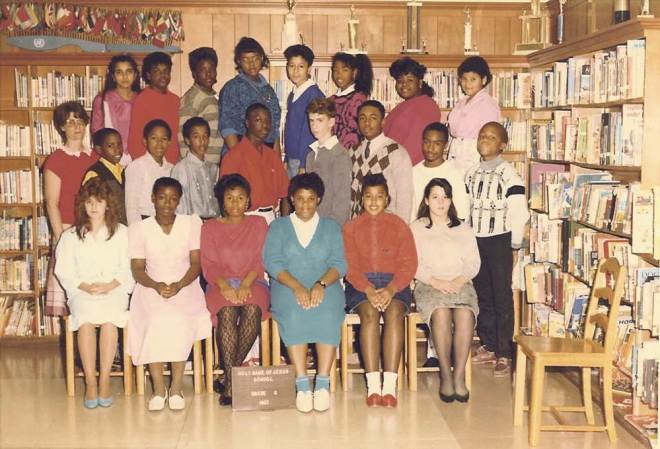


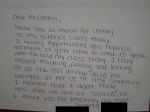


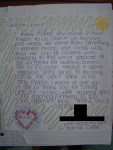
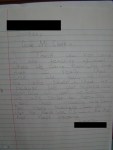


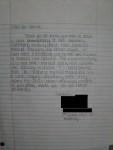
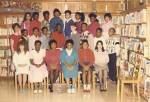


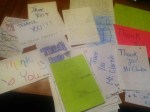
Pingback: Extending Anthropology - Anthropology Report | Anthropology Report
Pingback: More Outreach: A Return to KIPP, Year Five | Patrick F. Clarkin, Ph.D.